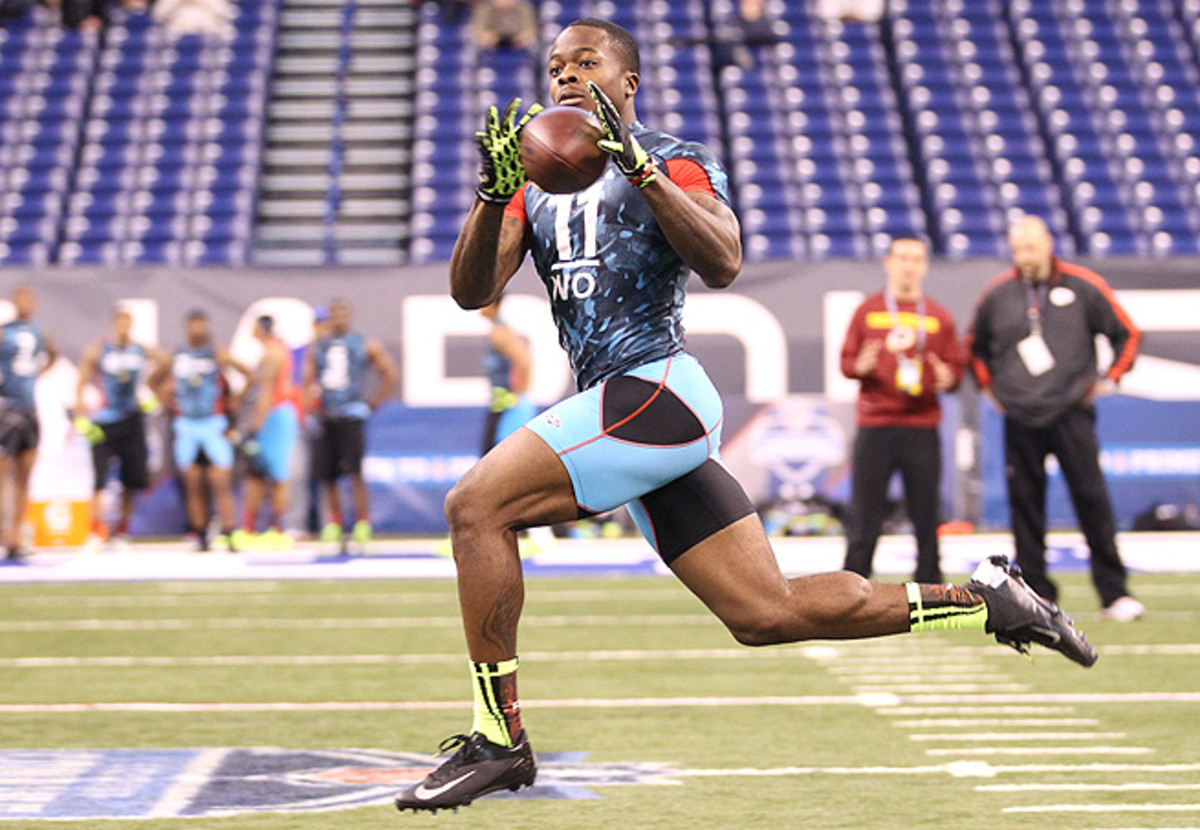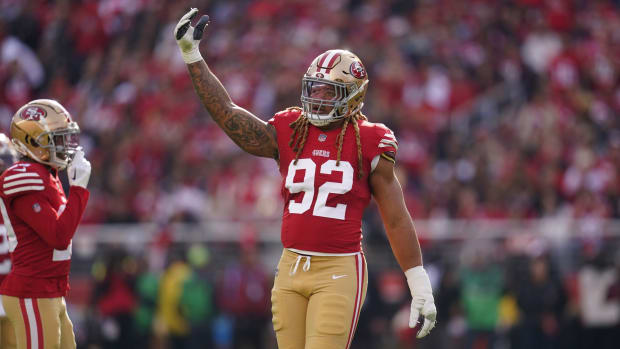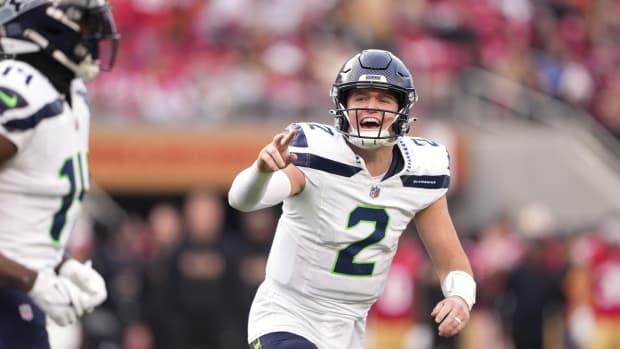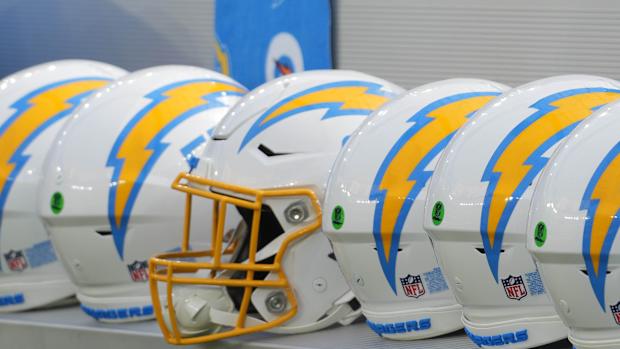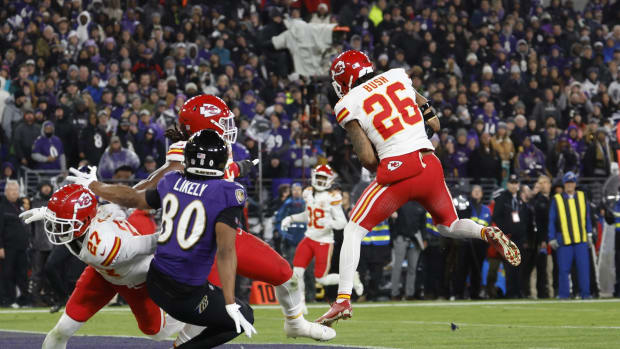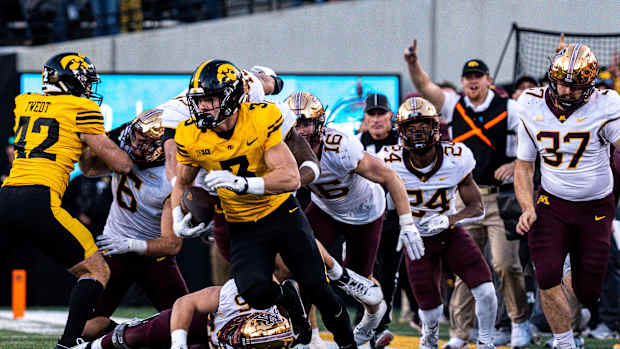Speed is crucial, but doesn't guarantee a successful NFL career
Al Davis would have loved this NFL draft. The late owner of the Oakland Raiders treasured speed over nearly everything else in his players, and the Class of 2013 is nothing if not rapid. So many players ran scorching 40-yard dashes at the Combine in Indianapolis in February that it should have been called "Fast Times at Lucas Oil Stadium."
As a result, the consensus among NFL coaches and scouts is that this may be the swiftest group of players. Ever.
Just take a look at some of these numbers -- Auburn's Onterio McCalebb (4.34) and Arkansas's Knile Davis (4.37) led the running backs in the 40s. Only two one-hundredths of a second separated three cornerbacks: Dee Milliner of Alabama (4.37), Desmond Trufant of Washington (4.38) and Jamar Taylor of Boise State (4.39). Among the wide receivers, Olympic long jumper Marquise Goodwin of Texas ran a blazing 4.27, while West Virginia's Tavon Austin and Texas A&M's Ryan Swope clocked 4.34s, and TCU's Josh Boyce ran a 4.38.
"It doesn't shock me," Rams general manager Les Snead said. "As human beings evolve, we're getting faster. As football evolves, especially defensive linemen, linebackers ... those guys are getting leaner and faster."
Gil Brandt, a longtime draft analyst and a former executive with the Cowboys, said more wide receivers ran 40s in the 4.4s this year than ever before. But it wasn't just the skill position players (wideouts, running backs, cornerbacks) who flashed their quicks. The speed of the big uglies snagged the attention of scouts, too.
Terron Armstead, the 6-5, 306-pound offensive tackle from Arkansas-Pine Bluff, ran a 4.71, the fastest 40 among offensive tackles since 2006 according to the NFL, while Oklahoma's Lane Johnson was less than a blink behind Armstead at 4.72. Several defensive linemen also displayed sizzling speed, including Georgia's Cornelius Washington (4.55), Auburn's Corey Lemonier (4.60), Oregon's Dion Jordan (4.60), SMU's Margus Hunt (4.62) and BYU's Ziggy Ansah (4.63), a former basketball and track athlete from Ghana who never had played football until 2010.
"It was definitely visible for us in the scouting community that the times were much faster," Titans director of college scouting Blake Beddingfield said. "It really didn't matter what position it was this year. They were off the charts in a lot of different areas."
If there was a poster boy for an athletic lineman, it's the 6-6 Johnson. The Groveton, Texas native played quarterback in high school and as a freshman at Kilgore College before transferring to Oklahoma, where he started as a tight end before switching to the line. He came into the Combine with a goal of breaking the 40-yard dash record set by offensive linemen, and his 40-yard time was faster than 10 of the 13 quarterbacks in Indianapolis.
"That kid might have had the freakiest Combine in history," NFL Network draft analyst Mike Mayock said. "Here's a left tackle who four years ago was a quarterback and tight end, and at 303 pounds he ran a 4.72. To me, that's crazy. That's as fast as (wide receiver) Anquan Boldin ran at the Combine (in 2003). He jumped 34 inches (vertically); that's almost the same as (Bengals wide receiver) A.J. Green (34.5) when he was at the (2011) Combine. He broad jumped 9 feet, 8 1/3 inches, the same as (Patriots running back) Stevan Ridley (in '11).
"Here's a left tackle that's putting up skill position numbers. It gets overlooked because all we want to see is that 4.24 that (Titans running back) Chris Johnson ran (in '08)."
By the way, Johnson (Lane, not Chris) also ran the three-cone drill in 7.31 seconds, a time that puts him among the top ten of offensive linemen since 2006, according to the NFL.
All of this begs the question: Why were times at the Combine faster this year? The explanation, it seems, comes in three parts.
Better preparation. Once their college seasons end, hundreds of draft-eligible players, at the behest of their agents, flock to the various athletic and sports performance factories around the country, such as IMG Academy in Bradenton, Fla., Chip Smith's CES facility headquartered in Atlanta, and the House of Speed, the speed training facility started by former NFL wide receiver Don Beebe, which has 22 franchises in 11 states.
From the time the players step into those facilities until the time they leave for Indianapolis, everything they do is targeted to hone their skills in all of the Combine drills (40, short and long shuttles, three-cone, vertical jump, broad jump). It's like taking a preparation class for the S.A.T. test.
Brandt, who likes to station himself at the starting line for the 40-yard dashes, said he can tell who has been training and who hasn't just by the way players come out of their stances.
"What they don't do anymore, 90 percent plus of them, is lift straight up," Brandt said. "They start out like a torpedo."
The preparation doesn't just start after their college careers have ended; many players begin learning about the Combine drills between their freshman and sophomore years. By the time they get to Indianapolis, they know all of the drills.
"I can remember going to pro days 10 years ago, when I was scouting for the Browns, and there would be kids there and you'd say, 'All right, we're going to do the short shuttle' and they'd say, 'What's that?'" said longtime NFL scout Russ Lande, now the scouting director for the National Football Post and the Montreal Alouettes of the Canadian Football League. "You'd have to explain it to them. Now, you never have to explain the drill. These kids know every drill inside and out."
Some players stay at their schools and train with their strength and conditioning coaches, who prepare them for the Combine. Iowa's Chris Doyle is one of the best, and as a result, Iowa's players routinely test better at the Combine and their pro day than many scouts expect, according to Lande.
Better bodies. In addition to the physical work they do in getting ready for the Combine, players are guided by nutritionists, who advise them on eating the proper foods and put them on weight-losing or weight-gaining programs depending on what they need.
Players continue to get bigger, stronger and faster because of scientific research advances in nutrition as well as weight training and conditioning. As a result, players arrive in Indy with bodies that look more like they've been hitting the gym than hitting the buffet line.
"The one thing that blows us all away is the body types," Mayock said. "You just don't see the predominance of fatties that we used to see. Are there still some big fat boys? Yeah. But for the most part, these guys are showing up in shape and running faster than they ever have."
Fleet feet. This year, Under Armour provided a new shoe, the UA Combine 40, to the players. Designed specifically for the 40-yard dash -- players were not allowed to wear it in positional drills -- it weighed only five ounces and had an upper made of a silky, mesh fabric.
There were two forms of the shoe. Every player was given a pair with a multi-colored upper and a hyper green sole and laces. A limited run foil version, which appeared to change colors as players ran in it, was distributed to select groups such as wide receivers and corners. "It's almost running barefooted," Brandt said, "except they get traction."
However, keep in mind that running a fast 40 in a controlled environment while wearing aerodynamic shoes and track shorts doesn't necessarily mean that a player will perform well on a football field in helmet, pads and cleats. Although there are examples of players who ran well at the Combine and went on to have great NFL careers -- such as linebacker Adalius Thomas (4.56 in 2000), defensive end Dwight Freeney (4.48 in 2002), and linebacker Shawne Merriman (4.68 in 2005) -- the NFL landscape is littered with guys who were workout warriors but flawed football players.
Former Ohio State defensive star Vernon Gholston clocked a 4.65 40 in 2008 and was a first-round draft pick (sixth overall) by the Jets. Yet Gholston has underachieved in the NFL -- he has had nary a sack in five seasons -- and currently is a free agent. Hampton defensive lineman Isaac Hilton, who ran a 4.57 in '04, was drafted by the Giants but cut before the season. He then played briefly for Tampa Bay and Carolina before moving on to the Arena League.
So a fast 40 doesn't always herald a successful NFL career.
"I think the new-found nutrition, the new-found weight, the new-found feeling good and getting your body in great condition can maybe help them play a little bit faster," Beddingfield said. "But what ends up happening is once they quit training for the 40 and they start going back and training for football again, they're going to lose some of that 40-timed speed. And then their true speed will come back out.
Nonetheless, speed will always be near the top of the list on an NFL scouting report. It's a characteristic coaches from Tom Landry to Chip Kelly have always sought.
"Coach Landry had a great saying," Brandt recalled. "He said, 'I can make 'em stronger but I can't make 'em faster.' "
































